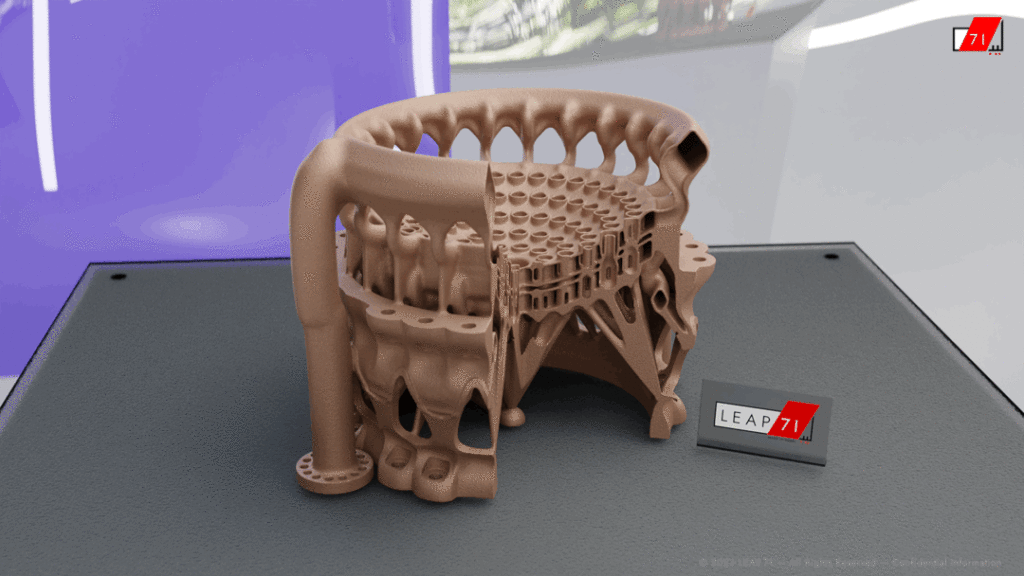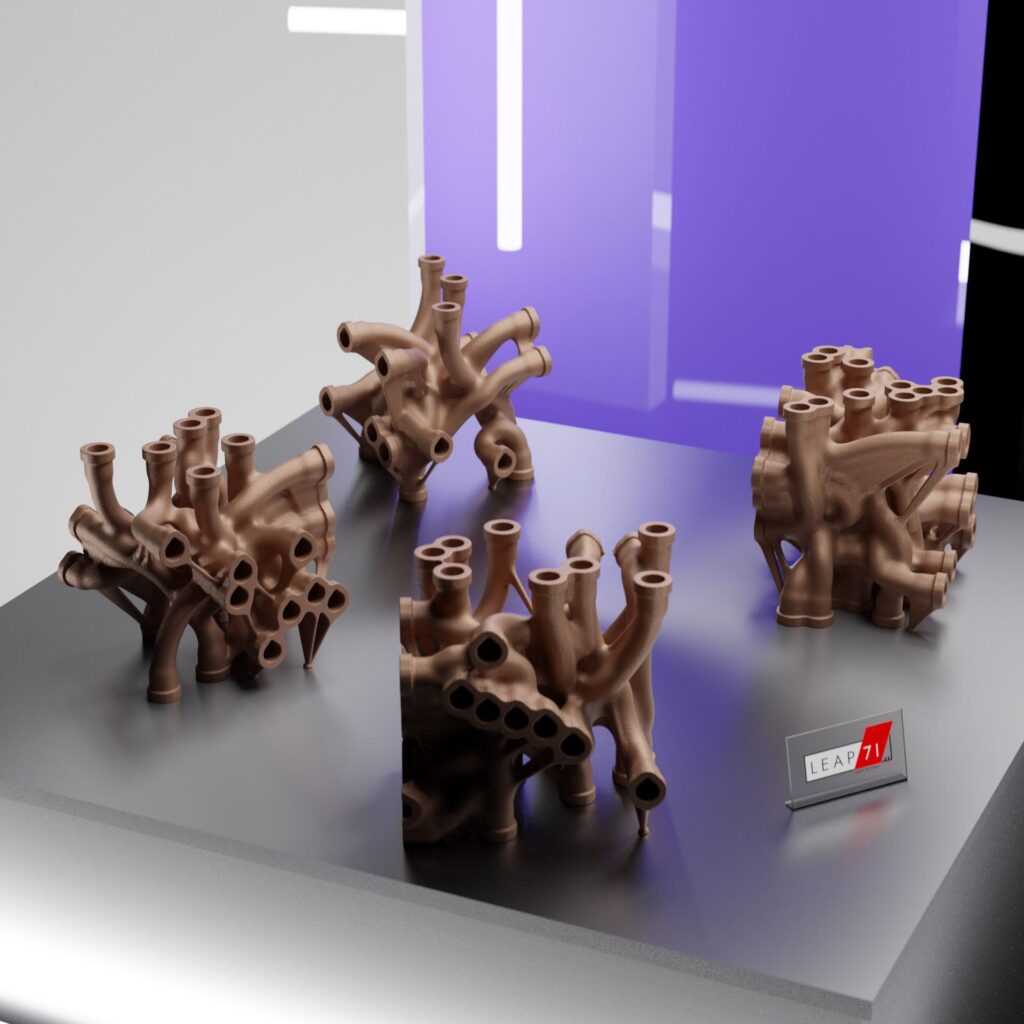MIMO TECHNIK, ASTRO Test Lab & LEAP 71 Combine Powers for Computational Engineering in Aerospace 3D Printing
California-based MIMO TECHNIK, a service bureau catering to demanding clients in the New Space and defense sectors, operates with six SLM 500s, four SLM 280s, and three SLM 125s. ASTRO Test Lab, located in Fremont, California, conducts a significant amount of mechanical testing for the New Space community and beyond. LEAP 71, a computational engineering startup based in Dubai, aims to revolutionize manufacturing processes. Together, as announced at the 2024 Additive Manufacturing Users Group Conference, these three firms are collaborating to build fully-qualified aerospace products using computational engineering, aiming to revolutionize manufacturing processes and create a new standard in aerospace production.
In computational engineering testing, algorithms and parameters are utilized to create a model capable of generating various objects. This approach combines generative design with machine learning. The concept revolves around designing a high-performance class of objects, rather than creating individual objects from scratch, allowing for easy customization. Instead of focusing on designing a single heatsink specific to one car, the effort shifts towards developing the optimal heatsink technology. An engineer would thus develop a system for creating optimal automotive heatsinks. Leap71 has developed an open-source kernel, PicoGK, which allows others to build on their capabilities to generate their own designs or design systems.
“Aerospace is a key focus for our company. Our computational systems can create sophisticated three-dimensional geometries based on encoded engineering principles and rooted in physics. However, we also need real-world manufacturing and testing feedback to continuously improve our models. By working with MIMO and ASTRO we can move to a truly collaborative workflow with a closed feedback loop, for the production and certification of very advanced systems,” LEAP 71 Managing Director Josefine Lissner said.
“Over the past decade, MIMO TECHNIK built up the capability to produce complex metal aerospace parts at scale. Our technology stack allows us to control the metal 3D printing process in our facility on an unprecedented level. But how can we create designs that truly take advantage of our capabilities? When we saw the work that LEAP 71 is doing in this field, it was clear, that this is the answer to significantly elevating the state of the art of engineering and manufacture things that were never created before,” MIMO TECHNIK CEO Jonathan Cohen stated.
“traditional engineering using CAD simply isn’t flexible enough to adapt to constant feedback from testing. Because of all the manual work involved, objects built today are far from optimal. Using LEAP 71’s computational approach, we can re-engineer in an instant, incorporate feedback that comes directly from our testing systems, and manufacture again, creating a virtuous cycle of innovation that is unheard-of, especially in the conservative field of space technology,” Humna Khan, CEO of ASTRO Test Lab, said.
One notable aspect is that the team aims to work on ITAR and AECA projects using LEAP 71 software and models. This could present a significant advantage for the UAE-based firm, as it would allow its software to be used for highly complex parts to which it would not normally have access.
Computational engineering, similar to generative design and other algorithm-based design methodologies, has been criticized for producing much hype and triviality. However, the concept holds significant value. Elevating design to a higher level of abstraction could revolutionize it similarly to what Integrated Development Environments (IDEs) have done for coding. This change could enable more people to accomplish more tasks quickly, while experts could create widgets for widespread use. Eventually, generative design may prove to be effective, although it remains uncertain if this approach will be successful this time.
This trio of firms plans to conduct a live fire test to evaluate the effectiveness of their approach. They aim to go beyond creating display items for trade shows, focusing instead on flight-critical hardware. Together, they want to establish a pathway from concept to manufacturing, with a particular emphasis on aerospace. However, they also see potential applications in broader fields, especially in defense and new space, where many super complex parts are difficult to model manually. Computational engineering could demonstrate significant value in these areas.
Subscribe to Our Email Newsletter
Stay up-to-date on all the latest news from the 3D printing industry and receive information and offers from third party vendors.
Print Services
Upload your 3D Models and get them printed quickly and efficiently.
You May Also Like
The Dental Additive Manufacturing Market Could Nearly Double by 2033, According to AM Research
According to an AM Research report from 2024, the medical device industry, specifically in dentistry, prosthetics, and audiology, is expected to see significant growth as these segments continue to benefit from...
Heating Up: 3D Systems’ Scott Green Discusses 3D Printing’s Potential in the Data Center Industry
The relentless rise of NVIDIA, the steadily increasing pledges of major private and public investments in national infrastructure projects around the world, and the general cultural obsession with AI have...
AM Research Webinar Explores Continuum’s Sustainable Metal Additive Manufacturing Powders
Metal additive manufacturing (AM) powder supplier Continuum Powders is working to develop solutions that empower industries to reduce waste and optimize their resources. An independent life cycle assessment (LCA) of...
3D Printed Footwear Startup Koobz Lands $7.2M in Seed Round
California-based Koobz is focused on reshoring the U.S. footwear supply chain with advanced manufacturing processes, including 3D printing. The startup just announced that it has added $6 million to its...


































